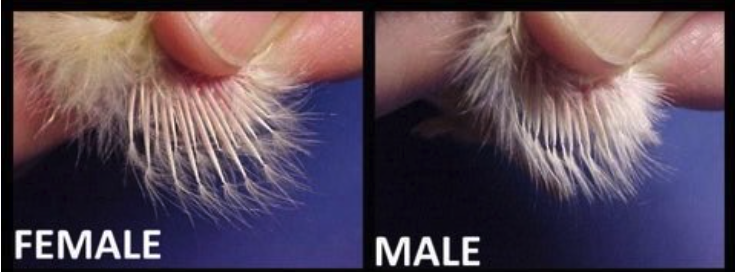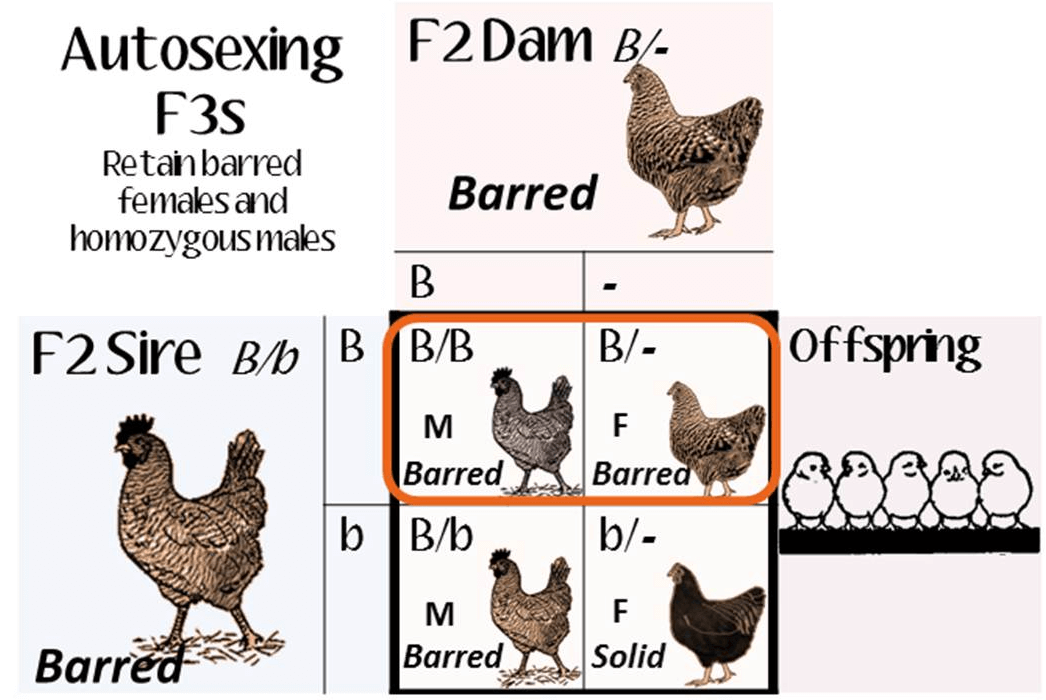Is My Baby Chick Male or Female?: Lessons from Top Farmers
Published: March 30, 2024

So you’ve got a bunch of baby chicks, but you have no idea which ones are male and female. Identifying the sex of baby chicks (aka sexing baby chicks) is a fundamental requirement for any poultry operation.
While several methods are spoken about, some are myths, some are practical, and others are accurate. But which is which?
In this article, we’ll break down the methods that matter so you can manage a productive and profitable poultry operation and solve the mystery of identifying baby chicks. Let’s get started.
Term | Definition |
|---|---|
Chick Sexing | Determining the sex of the baby chicks |
Chick | A young baby bird, a newly hatched chicken |
Cockerel | Young male baby chicks |
Pullet | Young female baby chicks |
Hen | An adult active egg-laying female chicken |
Rooster | An adult male chicken |
How to Tell if a Chick is Male or Female
Now that we’ve established the primary definitions let’s discuss methods for identifying female chicks versus male chicks. There are a few tried-and-true methods.
Vent Sexing: The Reliable Method for Hatcheries
Vent sexing is used to examine the cloaca (or vent). It involves delicate manual techniques to study the internal sexual organs of the chick.
How to use the vent sexing method
In vent sexing, a chick is gently squeezed to expose the cloaca, the opening where chicks eliminate their waste and where reproductive organs are located.
Examining the anatomy of the vent will disclose the chick's sex. To begin, you’ll turn the chick upside down and everting (slightly turning outward) the vent of the carefully held chick to look for differences.
The video below demonstrates how to use this method correctly.
Cockerals (male chicks) have a small bump in the center of their vent. Pullets (female chicks) typically do not have this bump, though due to the size of the vent, it is often challenging to see the difference without a trained eye.
Though effective, this method requires expertise, so hatcheries typically provide this service before selling the chicks.
Advantages and Drawbacks
When done correctly, vent sexing is a reliable and common method among production poultry owners. However, it potentially harms the chick if not done meticulously or by a trained professional. It's crucial to consider these factors before relying wholly on this technique.
In addition, because you are exposing areas sensitive to outside pathogens, you could inadvertently introduce health issues.
For those not confident in performing this task, you can use the feather sexing or auto sexing method, which we discuss next.
Feather Sexing: The Genetic Approach
Feather sexing, unlike vent sexing, leverages their natural genetic traits based on a chick��’s feathers.
How to use the Feather Sexing method
In feather sexing, males typically have shorter feathers in appearance than females, who have longer feathers on their primary wings. Males also typically have wing feathers that are more uniform or aligned as you scan the wings.
You are essentially relying on the difference in their feather growth rate to tell the difference in their sex. This method is more common for backyard chicken owners.

Advantages and Drawbacks
Feather sexing provides fewer risks to chicks since you are not examining their vents, and is relatively accurate, though compared to vent sexing, it is less accurate.
The drawback is that this method may only be available for some breeds as the necessary visual indicators may not be present.
Auto sexing
Auto sexing refers to automatically knowing the sex of the chicks near hatching time based on breeding two different breeds of birds. This is often referred to as sex-linking chickens.
What are sex-linked chickens?
Sex-linked chicks directly result from cross-breeding two chicken breeds together to produce chicks.
Because color patterns are linked to sex chromosomes in birds, breeding specific breeds together allows the male and female chicks to exhibit distinct colors, allowing breeders to discern the sex almost immediately after they hatch visually, hence the term “auto sexing.”

Breeders using this method no longer need to use any additional methods of identifying the sex of chicks.
Advantages and Drawbacks
One major advantage to auto-sexing is the speed at which the sex is identified compared to vent and feather methods. The faster a farmer can identify the sex, the faster they can organize their production schedules for optimal output.
The challenge with this method is that you need to understand what it takes to cross-breed poultry, which isn’t something you can just jump into without spending time educating yourself.
Enhancing Your Skills: Additional Techniques to Determine Chick Gender
While the above methods allow for the most accurate options, you can also observe other characteristics to help determine a chick's sex.
Observing Behavior Differences
Behavioral differences among chicks can provide significant insights into their gender. Beginning from their early days, male and female chicks exhibit diverse behaviors that can act as a cue for farmers and breeders.
Male chicks are slightly more playful and aggressive than their female counterparts. They tend to strut around confidently and attempt to peck others more frequently. While this isn't a definitive indication, a chick displaying these behaviors can often be concluded to be male.
Roosting Habits
The roosting habits of chicks provide another distinguishing feature. Cockerels, aged about six to eight weeks, roost higher than the rest, indicating an early development of their territorial instincts and dominance.
Noticing Growth Rate Differences
Growth rates can indicate the difference between male and female chicks. Understanding these differences requires careful observation and a baseline knowledge of typical growth rates for different breeds.
Typically, male chicks grow faster, getting bigger and taller than their female counterparts within a few weeks of hatching. They also start developing their combs and wattles sooner, providing a visual clue for identification.
Feathering Sequence
The feathering sequence also provides a reliable method of chick gender identification. In many breeds, pullets feather out more quickly than cockerels. If you notice a chick that seems more fluffy and has wing feathers developing sooner, chances are it's a female.
Frequently asked questions around chick sexing
What is Chick Sexing?
Chick sexing is the general term farmers use to distinguish male chicks from female ones. This technique encompasses several methods with varying efficiency levels, difficulty, and accuracy.
What are the Methods of Chick Sexing
The three primary methods are
Vent sexing - inspecting a chick's reproductive tracts
Feather sexing - inspecting a chick’s feathers for differences
Auto sexing - cross-breeding adult chickens resulting in chicks with color-identifying characteristics, such that a breeder will “automatically” know the sex of each chick.
Why is Chick Gender Identification Important?
Chick gender identification is the backbone of effective poultry farming. Nurturing chicks according to their genders can significantly increase the yield of eggs and meat.
The Impact of Efficient Chick Gender Identification
Efficient identification of boy and girl chicks can help farmers economically by allocating resources optimally, reducing waste, and maximizing productivity, making it a key factor in successful poultry farming.
Common Misconceptions in Chick Gender Identification
While gender identification is crucial, multiple myths around the process can adversely impact its efficiency. One such misconception is that the shape and size of the egg can determine the gender of the hatching chick, a theory that experts have widely debunked.
Cracking the Code in Poultry Farming
As the world of poultry farming evolves, understanding chick gender identification is indispensable. It optimizes profit and reduces unnecessary resource wastage, thus paving the path to a sustainable farming model.
This vital insight empowers your poultry enterprise endeavors - laying a blueprint for the progressive farmer. It’s one thing to know; it's another to act. We hope this guide has been helpful in your venture so you’ll never have to wonder which is which again!
Keep track of all your cattle with the #1 Cattle Management Software
Try out Ranchr today for free